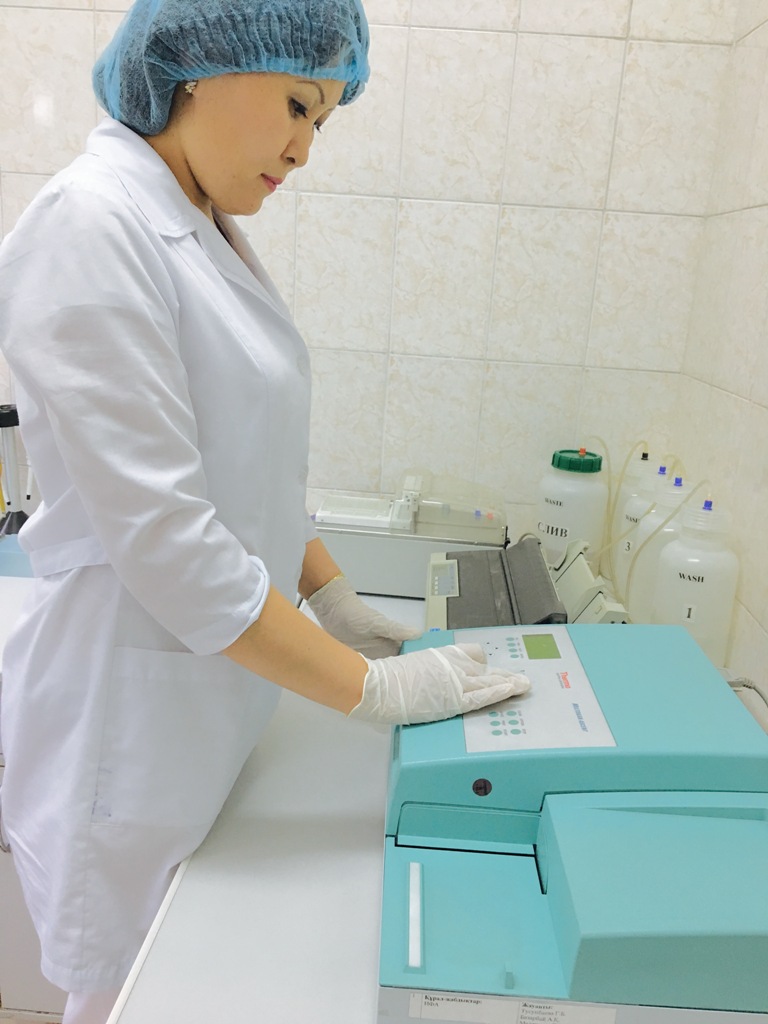

Order a call
 23.05.2017
23.05.2017
Today, residents of the regions of the Republic of Kazakhstan where ticks are common - the city of Almaty, Almaty and East Kazakhstan regions, have become more literate and attentive to issues of protection against ticks, but the number of infected and bitten people does not decrease, and only increases from year to year. In these regions, activities are being carried out as a result of which the population receives the necessary information about the causes of the spread of infection transmitted by ticks, symptoms, methods and means of protection against them, routes of transmission, as well as prevention and treatment.
The Almaty branch of the Republican State Enterprise at the National Center of Economics, which is part of the Committee for Public Health Protection of the Ministry of Health of the Republic of Kazakhstan, holds special events in the spring-summer season in order to protect and protect the health of the city population, and also conducts disease diagnosis and research to detect infection transmitted through ticks. For this purpose, the branch has all the necessary equipment and has a highly professional staff of specialists who can quickly complete the work and provide assistance.
Specialist of the parasitological laboratory of the branch Tusupbaeva G.B. spoke about diseases transmitted by ticks and how to spend the spring-summer time calmly and cheerfully, without fear of being bitten by a blood-sucking insect.
- Please tell us about how to be prepared for a “meeting” with a tick and what the possible outcomes of this “meeting” might be. What infections do they transmit and how to “stay alive”?
- The danger from ticks in the warm season in our city is high, so residents and guests of the southern capital should be more careful and careful when traveling outside the city and hiking in the mountains, even in public gardens and parks there is a chance of being bitten by a tick, although in the city Anti-tick treatment is carried out, but you should still take care of yourself. Not all ticks can transmit infections and viruses; there is a type of tick that carries infection - these are ixodid ticks, the virus is transmitted by the bite of a sick tick.
Tick-borne encephalitis is a viral natural focal infection that is transmitted after tick bites and primarily affects the central nervous system.
General symptoms of the initial period: increased body temperature to 39-40 ° C, chills, headache. lower back pain. pain in the eyeballs, intolerance to bright light (photophobia), weakness, lethargy, possible nausea and vomiting, redness of the skin of the face, neck, chest, rapid breathing, rare pulse, low blood pressure, coated tongue, swollen abdomen, possible enlargement of the liver and spleen . A tick bite is not accompanied by pain in humans. An attached tick can remain unnoticed for a long time. Infection of a person can occur not only from a bite, but also from crushing and rubbing an attached tick, or from eating infected raw goat and cow milk.
A person who discovers a tick can remove it independently and bring it for examination. However, not every disease that occurs after such a bite is encephalitis; only 0.5-5% of all ticks are carriers of viruses. Thanks to ELISA, it is possible to detect the pathogen at an earlier stage, which effectively affects the treatment of this disease.
- Is it possible to confuse tick-borne encephalitis or tick-borne borelliosis with other diseases?
- There is always a possibility, since the symptoms of many diseases are similar, so you should always contact medical centers to accurately determine and receive the necessary and emergency care. You know that there are cases of death after a tick bite.
With tick-borne borreliosis, infection occurs through the bite of an infected tick. Borrelia enter the skin with the tick's saliva and multiply within several days, after which they spread to other areas of the skin and internal organs (heart, brain, joints, etc.). Borrelia can persist in the human body for a long time (years), causing a chronic and recurrent course of the disease. The chronic course of the disease can develop after a long period of time. The process of disease development in borreliosis is similar to the process of development of syphilis. The appearance of a red spot at the site of a tick bite gives reason to think primarily about Lyme disease. To confirm the diagnosis, a blood test is performed.
Local symptoms are as follows: pain, swelling, itching, and redness appear at the site of the tick bite. The so-called ring-shaped erythema is formed - a specific symptom of tick-borne borreliosis.
- What should you do to protect yourself from ticks?
- To protect yourself from ticks, when visiting areas where ticks may be present, wear closed shoes, pants that fit tightly around the ankle, or tucked into high-top shoes. Wear jackets whose sleeves are fixed and fit tightly to your arms. There are special anti-encephalitis suits. These suits are made of thick fabric with drawstrings. They reliably protect against ticks.
Some advice from an expert: